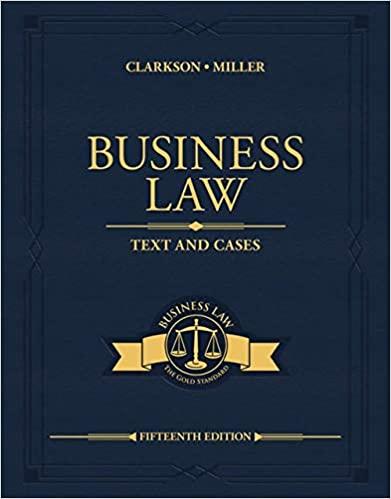Question
QUESTION 1 Match the terms with the correct descriptions. Please note each term may only be used once. Instrument of last resort to deal with
QUESTION 1
Match the terms with the correct descriptions. Please note each term may only be used once.
- Instrument of last resort to deal with emergencies when all other laws in Canada prove inadequate
- Mandate for local authority or organization emergency program
- The process designed to help communities prevent and mitigate the effects of a potential disaster, prepare for disaster, respond effectively to a disaster, and recover as quickly as possible after the event
- Legislation intended to reinforce efforts to ensure that Canada is well prepared to mitigate, prepare for, respond to and recover from natural and human-induced risks to the safety and security of Canadians
- Documentation that clarifies the roles, responsibilities and obligations of various sectors of the provincial or territorial government as well as responsibilities of a local authority
A. Emergencies Act
B. Provincial and Territorial Legislation
C. Emergency Management
D. Emergency Bylaw/Regulation/Policy
E. Emergency Management Act
Match the terms with the correct descriptions. Please note each term may only be used once.
- Mechanism for gathering, reviewing and assessing feedback from key stakeholders on an ongoing basis and making any necessary revisions based on their input
- Responsible for emergency planning and implementation of mitigation, preparedness, response and recovery strategies to an organization or local government structure
- Various agencies, staff and/or volunteer groups responsible for developing and supporting an emergency management program
- Provide communication links for field operation, or to replace or supplement traditional communication methods during a disaster
- Short-term support/assistance to preserve the emotional and physical well being of people evacuated from their homes during emergency situations
- A source of potential harm or a situation with a potential for causing harm, in terms of human injury; damage to health, property, the environment and other things of value; or some combination of these
- The process of identifying hazards, evaluating risk and assessing vulnerability
- The physical/environmental, social, economic and political consequences or adverse effect that may occur as the result of a hazard event
- Federal agency responsible for working with First Nations communities to plan and prepare for emergencies and disasters
- Neighbourhood volunteers working in partnership with local government to prepare for and respond to an emergency or disaster
- Planning and readiness measures that are undertaken to enable effective response to, and recovery from, emergencies and disasters
- Activities and practices designed to avoid or minimize the impacts of a disaster
- Components of Emergency Management
- Frame the underlying beliefs and goals of emergency management
- Responsible for developing programs and policies to prepare for national disasters, oversee involvement in international emergency preparedness, and provide post-disaster financial aid
- Activities designed to restore physical, social and economic conditions to normal pre-event levels
- Activities designed to address the short-term effects of an incident and reduce loss and suffering
- A concept that takes into consideration the likelihood that a hazard will occur, as well as the severity of possible impacts to health, property, the environment, or others of value
- The act of searching for, and rescuing, any person who becomes overdue, lost, injured or stranded
- The people, property infrastructure, industry, resources, or environment that are particularly exposed to adverse impact from a hazard event
A.
Principles of Emergency Management
B.
Vulnerability
C.
Emergency Planning Committee
D.
Indigenous Services Canada
E.
Hazard
F.
Hazards, Risk and Vulnerability Analysis
G.
Neighbourhood Emergency Preparedness Programs
H.
Impact
I.
Preparedness
J.
Public Safety Canada
K.
Prevention and Mitigation, Preparedness, Response, and Recovery
L.
Recovery
M.
Emergency Management Program
N.
Emergency Radio Communications
O.
Emergency Support/Social Services (ESS)
P.
Risk
Q.
Continuous Improvement Process
R.
Response
S.
Prevention and Mitigation
T.
Search and Rescue
Step by Step Solution
There are 3 Steps involved in it
Step: 1

Get Instant Access to Expert-Tailored Solutions
See step-by-step solutions with expert insights and AI powered tools for academic success
Step: 2

Step: 3

Ace Your Homework with AI
Get the answers you need in no time with our AI-driven, step-by-step assistance
Get Started


